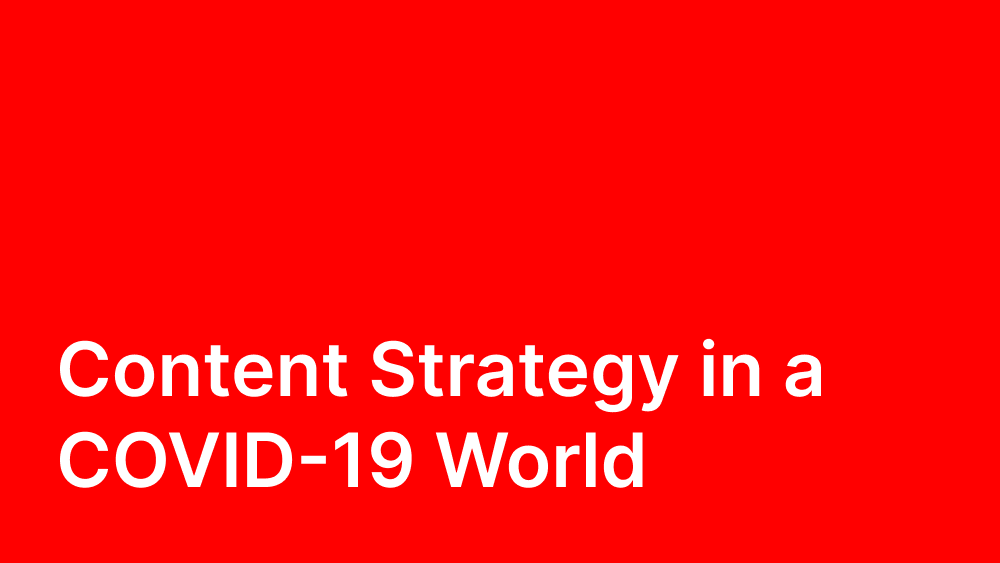It has never been more crucial for a firm’s core proposition, its capabilities and USPs to stand out. This means ensuring that you can identify areas of ‘white space’ where your firm can really own the conversation. Identifying these topics and themes that your firm is best placed to own can be difficult. That’s why we have introduced our 5 step methodology to win ‘category authority’.
1. Baseline Audit
The best place to start is to revisit your company goals, objectives and marketing strategy, to confirm what outcomes the messaging & content is designed to help achieve.
With your strategy and goals in mind, it is extremely relevant to benchmark your firms’ perception and brand presence against the industry and key competitors. We look at 10 integrated marketing metrics including:
- Brand Awareness
- Messaging Effectiveness
- Share of Voice
- Media Sentiment
- Google Page 1
- Social Media Effectiveness
- Search Engine Optimisation (SEO)
- Paid Search
- Paid Media
- Website Effectiveness
This analysis helps show areas of strength, areas of comparative opportunity and room for improvement (the low hanging fruit), as well as actionable competitor intelligence.
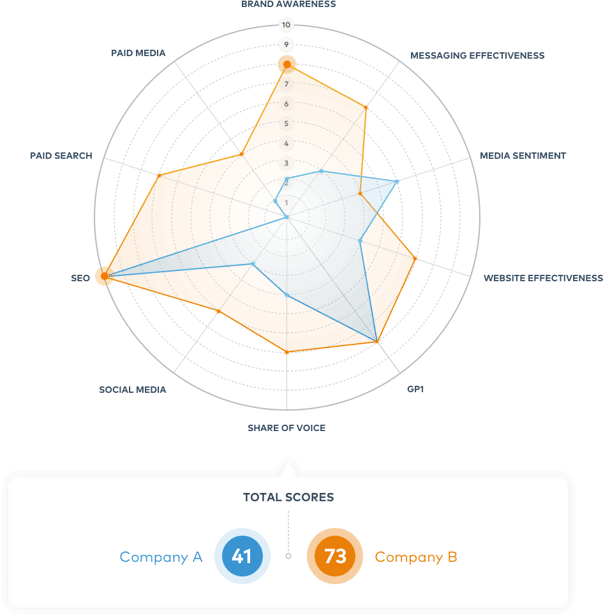
Next, review all existing messaging & content from: websites, press releases, blogs, videos etc. and identify and collate any information around: positioning, elevator pitch, key messaging, themes etc. ready for a messaging and content workshop.
2. Messaging and Content Workshop
When holding a workshop, it is essential that the key spokespeople are as involved as possible, because they really need to ‘own’ the messaging themselves.
Firstly, identify your key audience segments, their user journeys, touchpoints or ‘hot buttons’ and needs. With this audience in mind, identify your core capabilities and differentiated edge, and aim to summarise this into one or two sentences that effectively communicate your core proposition or your ‘Elevator pitch’.
To support this you also need to identify three message pillars that further substantiate the elevator pitch and provide proof points for each pillar (data, case studies, anecdotes), crucially providing the fuel for marketing content. It’s also important to identify key words and topics you want to associate with, comparing this to what competitors are using.
3. White Space Analysis
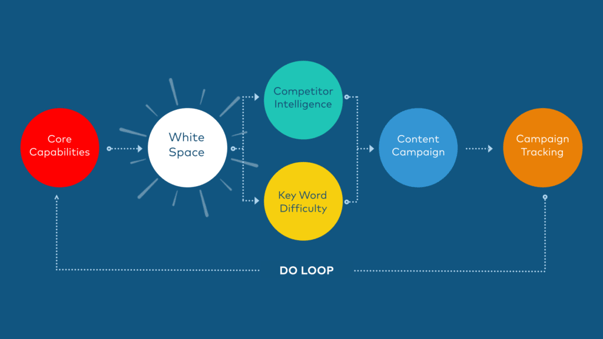
At its heart, finding white space is about making sure that your marketing and communication is built on themes and topics you can actually own, both in terms of the media conversation, but also in terms of the online search engine real estate.
There are plenty of ways of trying to find white space that matches up with your core capabilities including; peer analysis to see what your competitors are doing, assessing which keywords they own and which ones could be up for grabs; or you can A/B test potential themes with your audience.
We’ve developed a simple framework that lets us compare the proportion of tier 1 media coverage on a particular theme versus the proportion of organic demand we can see for the topic, looking at social media engagement and Google search volumes. This allows us to see which themes are already under or over-indexed by the market.
This approach enables you to drill down into different regions or even sub-themes within a wider topic. It also helps ensure that you are confident that you’re building campaigns around the most powerful themes possible.
4. Content Campaigns – Execution
Having identified the white space that matches up with your firm’s differentiated edge, the next step is to decide the types of content you think will best communicate these stories and insights to your audience. Do you want a centre piece to be a whitepaper or an infographic on a dedicated landing page, or is it a profile opportunity with FTfm, or even all of them?
The next phase of the execution process is distribution. You know your audience, their user journey and which channels will be most effective in reaching them. It could be any combination of email, social media, media story, paid media or paid search built into one integrated campaign. Right now it could even be a webinar!
5. Tracking & Improvement – Best Practice
Once the campaign has been launched, it’s important to track engagement so you can measure its success and, critically, feed the insights gained back into your next campaign and getting closer to best practice. It’ll show what works and doesn’t work for you in helping you meet your objectives. From Peregrine’s own tracking, a number of best practices emerge:
- Campaigns need to be really focused and deeply connected to your own brand identity, offering real insights to the audiences you serve
- The campaign should be used as a way of breaking out of your current level of brand awareness, not just business as usual. We call this a pattern interrupt campaign, equating to a 20% increase in brand awareness
- Quality over quantity. More focused, punchier campaigns have far more impact than a large number of smaller ones on brand awareness over time
- Campaigns must be properly integrated across key channels in a way that generates more impact than the sum of its parts
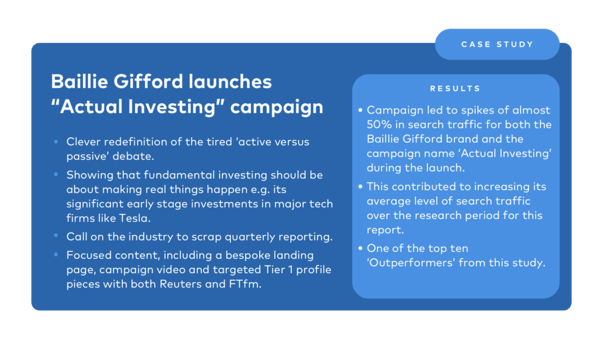
How does COVID-19 affect this process?
In the midst of COVID-19, a burning question is whether you need to rethink your content calendars. To answer this question, we’ve put together a really simple diagram that outlines our general rule of thumb:
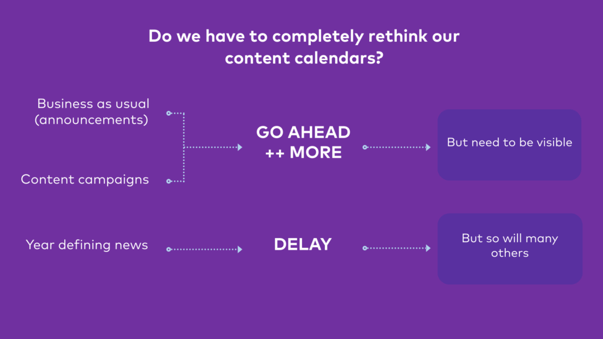
Broadly speaking, content can fall into three categories: business as usual, campaigns based on themes and insight, and year defining campaigns that people remember your firm by in 2020.
In most cases, the first two types of content should continue without delay. Working from home, your audience has an unprecedented amount of time to consume news and content, but you may need to distribute differently to ensure it reaches them.
For year defining content we would suggest waiting. In most cases, your corporate story is likely to get lost in the maelstrom of coronavirus related anxiety. But be advised, everyone else will be thinking along similar lines, so make sure your content really is good enough to stand out when the time comes to share it.


